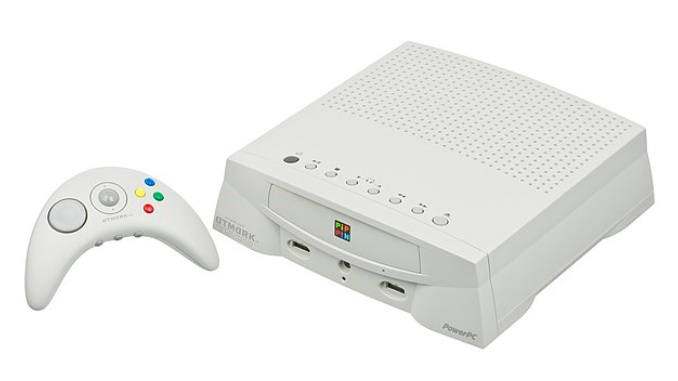
Apple has a stellar hit rate with industry-shaping successes like the iPod, iPhone and iMac as standouts. But it has some misses as well. Big ones. Though Apple’s way-too-early PDA device the Newton is typically cited as one of the tech giant’s most famous missteps, the would-be videogame console Pippin failed so quickly and quietly it sometimes doesn’t even make the list.
It took a few decades of fits and starts, but Apple finally carved out a spot in the videogame industry thanks to Apple Arcade—a mobile gaming subscription plan that fits into the wider Music and iCloud services ecosystem.
But back in the mid-1990s, the gaming industry was all about the console wars, and, for a brief moment, Apple tried to carve out its own corner alongside the Nintendo 64, Sony’s burgeoning PlayStation and SEGA’s stumbling Saturn. This was in Apple’s oft-forgotten “wandering in the desert” era, when the company experimented with everything from clone hardware to the aforementioned Newton while waiting for founder Steve Jobs to eventually return in 1997 and set the company back on track.
But a year or two before Jobs pulled the iMac out of his hat, Apple saw how much money and market share companies like Nintendo, SEGA and Sony were locking down with videogame consoles that would run off the living room TV instead of a computer monitor. So when toy and videogame manufacturer Bandai came calling around 1993 with an idea to essentially turn a bare-bones Mac computer into a set-top box videogame console, Apple was all ears. Much like the fledgling “clone” computer approach, which saw Apple selling its software and specs to other companies to manufacture and market hardware (aka the Windows business model), the idea was for Apple to provide the specs and standard, with other companies taking on the manufacturing and distribution.
If the concept sounds familiar, it’s similar to what the 3DO attempted in 1993-1994, with Electronic Arts founder Trip Hawkins developing specs and a platform while companies like Panasonic produced and released the hardware. The 3DO failed despite a ton of hype and the backing of a videogame giant like Hawkins, and even top-tier titles like Alone in the Dark, Myst and Gex couldn’t make it a true player.
On the hardware side, the Pippin was based on the old Mac OS computer architecture from the early-to-mid-1990s, with a 66 MHz PowerPC 603RISC microprocessor, and the handful of models featured between 6-8 MB of RAM. The menus and navigation also bore a striking resemblance to the old Mac OS. The specs were a bit underpowered for the era, but with the idea of creating a bare bones console with computer hardware, it checked most of the boxes. Apple licensed the platform to Bandai and Katz Media, with the black Bandai Pippin @WORLD arguably the most well-known model, retailing for $599 and hitting shelves in 1996.
The system was over-priced (for a videogame console) and underpowered (for a computer), falling into a weird middle ground that didn’t really prove all that popular for consumers. But the Pippin did do some interesting things along the way, most notably the decision to note feature region protection on its software—meaning games or applications released in Japan or the U.S. could be played on consoles from any region. Considering there wasn’t actually a lot of software released for the Pippin during its short lifespan, it at least made it easier for owners to use what was there.
Pippin owners could access a CD-ROM encyclopedia and other utilities with the device, which were novel for the era, but what about the games on this would-be games console? Well, the line-up was pretty weak. That made the Pippin a hard sale when lined up alongside a cheaper PlayStation and SEGA Saturn, with both offering far deeper game catalogs.
For reference, the top games on the Pippin included the Doom-esque Bungie shooter Marathon, side-scrolling beat ‘em up Power Rangers Zeo Versus The Machine Empire, 3D racing title Racing Days and edutainment titles like Mr. Potato Head Saves Veggie Valley. Not much of a line-up for the high entry price.
The controller was also an oddity, with a boomerang-style design that looked like an even less-comfortable variant of the Nintendo 64 controller. But it did feature a trackball at the center, which was admittedly awkward but still a novel way to navigate menus and manipulate gameplay.
With few games to offer, attempts to pivot the Pippin into set-top box territory proved spotty at best. The platform found use across some hospitals in Europe to access digital information, in some hotel chains as an internet device and in the Netherlands as a cable access box and internet device aimed at online shopping.
With weak sales and third-party software support almost non-existent, the Pippin met its end when Steve Jobs returned to Apple and took a machete to most of the company’s less-successful products in 1997. These days, the only legacy the Pippin has is among niche videogame collectors and completionist Apple fanboys, a mish-mash of half-good ideas in a wildly off-target execution that most people never even knew hit shelves.
If nothing else, Apple was at least onto something by recognizing the potential for growth in the videogame industry all those years ago. If only they could’ve waited a couple more years and let Jobs take a swing at it with his trademark flair—who knows what could’ve been for a Pippin 2?
Trent Moore is a recovering print journalist, and freelance editor and writer with bylines at lots of places. He likes to find the sweet spot where pop culture crosses over with everything else. Follow him at @trentlmoore on Twitter.